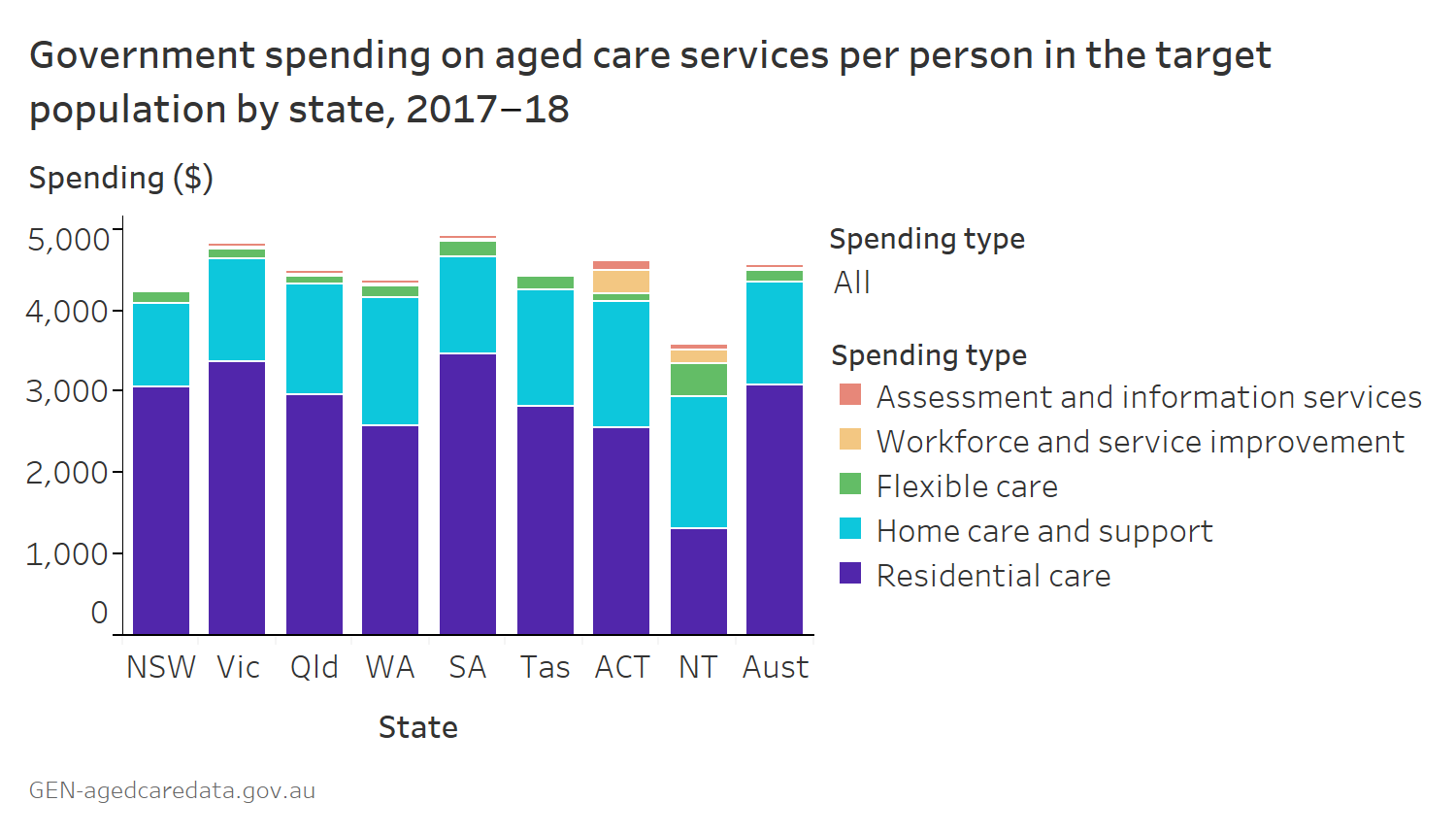
Following the commencement of the Royal Commission into Aged Care Quality and Safety, the spotlight is firmly fixed on the aged care sector in Australia. And, as the public inquiry exposes instances of abuse, neglect and mistreatment suffered in aged care facilities across the country, the federal government has vowed to spend more on aged care.
A number of announcements have been made by Aged Care Minister Ken Wyatt in recent months, including a $58 million boost, tripling the number of short-term restorative care places, and the roll-out of an extra 10,000 home care packages for those with high level care needs.
Now, new data compiled by the Australian Institute of Health and Welfare (AIHW) has broken down the sums spent by each state and territory on providing care for older Australians over the past financial year, including residential, home care and flexible care arrangements.

Read more: ‘They deserve our support’: Government pledges $662M aged care funding boost.
Since 2012-13, there has been a 34 per cent increase in spending for home care and support services as a greater number of older Australians remain in their own homes for longer, while spending for residential aged care services has also risen by 24 per cent.
An additional 50 per cent has been funnelled into assessment and information services, however spending on workforce and service improvement, as well as flexible care, have decreased.
According to the figures, this growth varies among the states and territories, with Tasmania boasting the highest increase in spending (49 per cent) on home care and support services between 2012-13 and 2017-18, followed by Queensland (43 per cent), while the Australian Capital Territory had the highest increase in spending for residential care (35 per cent).
Read more: Government announces $15M funding boost for seniors living at home.
With just over $18 billion spent on aged care services by governments in 2017-18, here’s how much each state and territory spent on different aspects of care:
In the last financial year, New South Wales spent a total of $4.1 billion on residential care and $1.4 billion on home care and support.
The NSW government, led by Premier Gladys Berejiklian, also dedicated $0.2 billion to flexible care. However, according to the AIHW data, the state spent just $48 million on assessment and information services and $43 million on workforce and service improvement in the last financial year.
A sum of $2.3 billion was spent on residential care in Queensland and $1.1 billion went towards the provision of home care and support services across the state.
While much smaller sums were spent on flexible care ($100 million), assessment and information services ($25 million) and workforce and service improvement ($5 million).
Victoria’s spending rates on aged care services per person were higher than the national rate, with $4,823 going towards each individual aged 65 and over, compared to the national average of $4,609.
A sum of $3.3 billion was spent on residential care in 2017-18, while $1.3 billion went towards home care and support services and flexible care cost around $100 million. In addition, the Labor government spent $37 million on assessment and information services and just $9 million in workforce and service improvement.
South Australia had the highest rate of spending ($4,914) on aged care services per person in the target population.
The Liberal SA government spent $1.1 billion on residential care, $0.4 billion on home care and support and just $100 million on flexible care. $13 million was spent on assessment and information services and just $2 million on workforce and service improvement, down from $7 million the year before.
Residential care cost the Western Australian government $1 billion last year, along with $0.6 billion for home care and support and a $100 million spend on flexible care.
To round off their spending, WA spent a total of $14 million on assessment and information services, as well as committing the lowest amount of any state or territory towards workforce and service improvement, spending just $1 million in that area.
The Tasmanian government spent a total of $320 million on residential and flexible care last year, while home care and support cost the Liberal government $153 million over 12 months.
Assessment and info services set the Tassie government back $4 million, while just $1 million was spent on workforce and service improvement in the state
According to the data, the Northern Territory government spent $50 million on resident care and flexible care in the last financial year, along with $47 million on home care.
Assessment and information services cost the government $2 million, which has remained the same for the past three years, and $5 million was spent on workforce and service improvement.
Government spending rates of $4,571 per older person in the Australian Capital Territory were higher than the national rate of $4,609, with the government spending a total of $144 million on both residential and flexible care last year, along with $83 million on home care and support services.
On top of that, the territory pumped $6 million into assessment and info services and $16 million into workforce and service improvement, the second highest spend in that area of any state or territory.